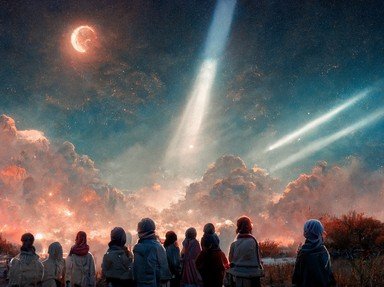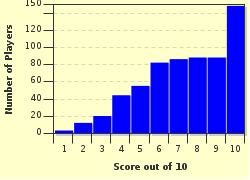Quiz Answer Key and Fun Facts
1. James Cook was born in the village of Marton, North Yorkshire in 1728. His family moved to the nearby town of Great Ayton where he received his early education before leaving for sea. What stands in Great Ayton today to commemorate this great explorer?
2. After serving in the merchant navy, Cook joined the Royal Navy in 1755. He became Master of HMS Pembroke in 1757. In 1759, he charted the St. Lawrence River in preparation for the siege of Quebec. During which war did this take place?
3. Following the Seven Years' War, Cook returned to North America with new orders in 1763 as Master of the schooner Grenville. He spent five seasons surveying and charting the whole of which Canadian island for the first time in history?
4. James Cook was killed in Hawaii in 1779. How and where did his son, James Cook, Jr., die?
5. In 1768, James Cook was promoted to the rank of Lieutenant and commanded the HM Bark Endeavour for the first of three voyages he would make to the Pacific Ocean. What was the mission of this historically important first voyage (1768-1771)?
6. James Cook made many discoveries during his first voyage to the Pacific which lasted nearly three years. Which island nation was he the first to circumnavigate and chart in under six months?
7. In April of 1770, James Cook and his crew saw the east coast of Australia. What name did he give to his landing spot?
8. James Cook was promoted to the rank of Commander and his second voyage (1772-1775) was spent searching for the Great Southern Continent. The Endeavour was deemed to be unfit for further service. What ship did he command from this point through to the end of his third voyage?
9. After the second voyage, James Cook was promoted to Captain and was made a Fellow of the Royal Society. He was an given honourable retirement and a post at Greenwich Hospital. This retirement lasted less than one year. What brought Captain Cook out of retirement to sail on his third voyage (1776-1779)?
10. In January 1778 Captain Cook and his crew became the first Europeans to see the Hawaiian Islands. Sadly, he was killed in a skirmish with the people of these islands on February 14, 1779. What name did he give the archipelago when he first discovered it?
Source: Author
johnnycat777
This quiz was reviewed by FunTrivia editor
bloomsby before going online.
Any errors found in FunTrivia content are routinely corrected through our feedback system.

